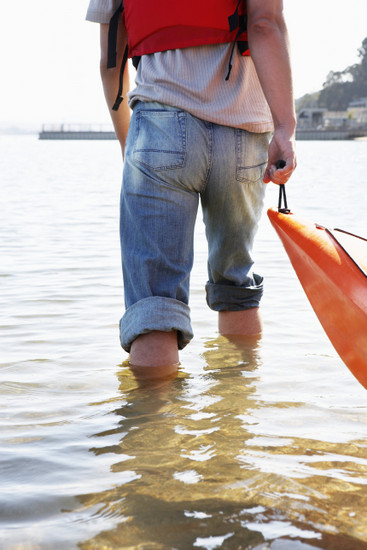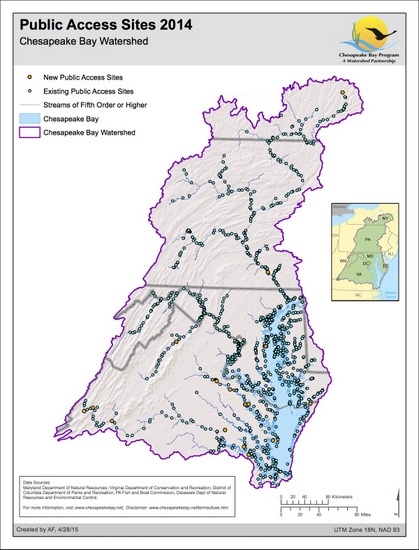Seventeen public access sites open along Chesapeake rivers and streams
Boat ramps, fishing piers and walking trails foster environmental stewardship.

Last year, our partners opened 17 boat ramps, fishing piers and other sites that grant public access to rivers, streams and the Chesapeake Bay. Virginia opened 14 sites, while Maryland, Pennsylvania, and New York each opened one. There are now 1,225 public places that allow people across the watershed to walk, play, swim, fish and launch their paddleboats, sailboats and powerboats into the water.

Partnerships between local, state and federal agencies and non-profit organizations have been essential in developing these sites: a soft launch for paddlecraft opened on the Chickahominy River with support from the James River Association. Walking trails, wildlife viewing platforms and interpretive signs were built on U.S. Fish and Wildlife Service land along Mount Landing Creek with support from the Virginia State Park Youth Conservation Corps. And a boat dock, wildlife viewing platform and public pavilion, as well as fishing access, were established at the Zimmerman Center for Heritage on the Susquehanna River with support from Pennsylvania’s Fish and Boat Commission, Department of Conservation and Natural Resources, and Department of Transportation, as well as the National Park Service and local donors.

As development continues across the watershed, demand for places that allow the public to reach the water remains high. State, federal and local governments are often the guardians of these places, providing opportunities for everyone to enjoy the region’s natural and cultural bounty. Because physical access to the Bay and its tributaries remains limited—with real consequences for quality of life, the economy and long-term conservation—our partners set a goal in the Chesapeake Bay Watershed Agreement to bring the total number of access sites in the watershed to 1,439 by 2025. And because public access to open space and waterways can create citizen stewards who care for local resources and engage in conservation, we track public access as an indicator of our progress toward fostering environmental stewardship.
“As an avid kayaker, I know the importance of having access to rivers, creeks and streams throughout the Chesapeake Bay watershed,” said Bay Program Director Nick DiPasquale in a media release. “As we come to know the resource through access to it, we will understand its value. Once we know its value, we will be more inclined to take actions to protect it. Public access is critical to restoring this vital ecosystem.”

Comments
There are no comments.
Thank you!
Your comment has been received. Before it can be published, the comment will be reviewed by our team to ensure it adheres with our rules of engagement.
Back to recent stories